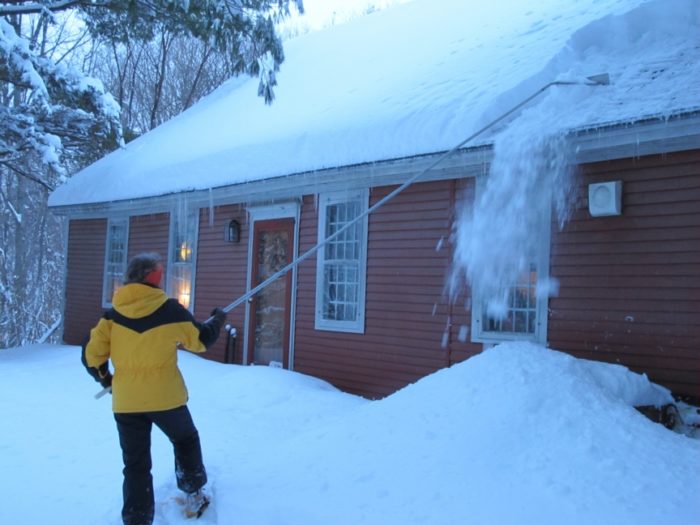
Image Credit: Alex Wilson
With all the snow we received in southern Vermont last week, it’s a great time to be an energy nerd! Lots of snow on roofs means that it’s easy to tell at a glance how energy efficient houses in the neighborhood are. I mean, it’s not a thorough energy audit. But it’s a good way to quickly get a sense of how buttoned up these houses are.
The principle is pretty simple: the less insulation in a house attic or at the rafters, the more heat escapes through the roof. That escaping heat melts the snow. As I’m driving into town, if I see that most of the nearly two feet of snow we received is still sitting there and the depth even, I can be pretty sure I’m looking at a well-insulated and tight house. Unless it’s a fairly steep metal roof (in which case the snow slides off pretty quickly), loss of snow is evidence of poor insulation.
It’s often possible to see exactly where the heat is escaping — because the snow is gone or the depth much less in that part of the roof. A wavy surface — like moguls on the snowboard slope — is a sure sign of wasted energy. In some conditions (especially with lighter snowfalls), it’s possible to see the exact location of the rafters, because they provide some additional insulation so leave ridges or lines of snow while the rest melts.
Usually, when excessive heat loss through the roof melts snow, you see ice dams at the roof edge. As the snow melts, it runs down the surface of the roof (under the insulating layer of snow) and freezes once it gets to the overhanging eaves — which are colder because they aren’t receiving escaping heat from the house. That freezing snowmelt can form massive ice dams and thick stalactites of ice extending down toward the ground.
Another very common problem — even in situations where there’s lots of insulation — is air leakage at the eaves. The juncture where the top of the wall framing connects with the roof framing and attic floor joists is notoriously difficult to air-seal, so leakage is common. Warm air flows up from the house below and melts the snow at the edge of the roof.
The superficial “fix” for these problems is to use a long-handled snow rake (a common Vermont tool) to pull that snow off the roof — at least the bottom four to six feet. It’s best to do this shortly after the snowfall, before much melting from below happens and ice dams build up. (The photo is of my own house, with yours truly manning the camera from a safe distance while my wife carries out this important task.) With some of the snow left on the roof, you might still get ice dams (depending on conditions), but there’s a greater chance that the snowmelt will run down the lower section of roof and evaporate without building up an ice dam.
The real fixes to these problems are much better done in good weather: dramatically boosting the insulation in your unheated attic or roof and carrying out air-sealing.
This blog isn’t at all meant to suggest that we should skip a “real” energy audit as we think about how to improve the energy performance of our houses. A thorough energy audit by a weatherization contractor will include a blower-door test and, often, thermographic analysis (in which a special infrared camera is used to identify areas of excessive heat loss). But the drive-by energy audit after a snowstorm is a great way to get a quick sense of the need for a real energy audit.
In addition to this Energy Solutions blog, Alex contributes to the weekly blog BuildingGreen’s Product of the Week, which profiles an interesting new green building product each week.
Alex is founder of BuildingGreen, Inc. and executive editor of Environmental Building News. To keep up with his latest articles and musings, you can sign up for his Twitter feed.
Weekly Newsletter
Get building science and energy efficiency advice, plus special offers, in your inbox.





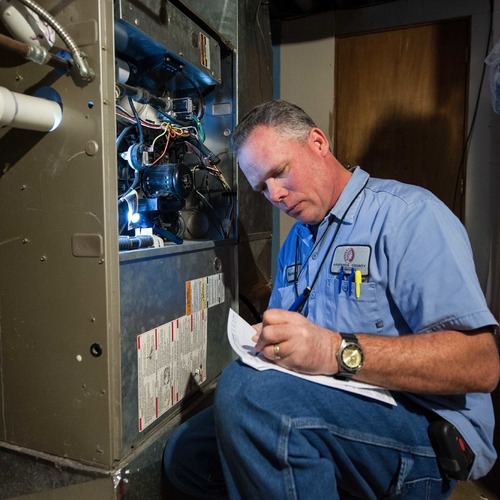
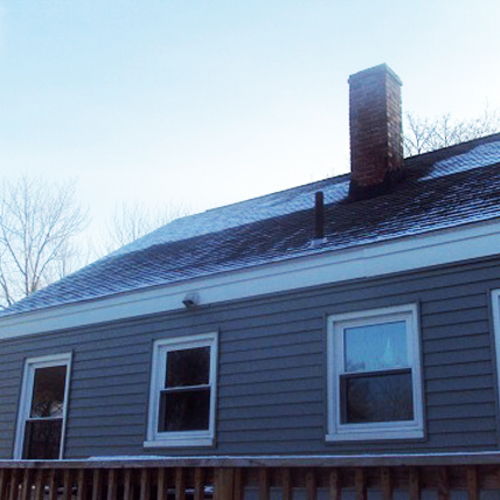
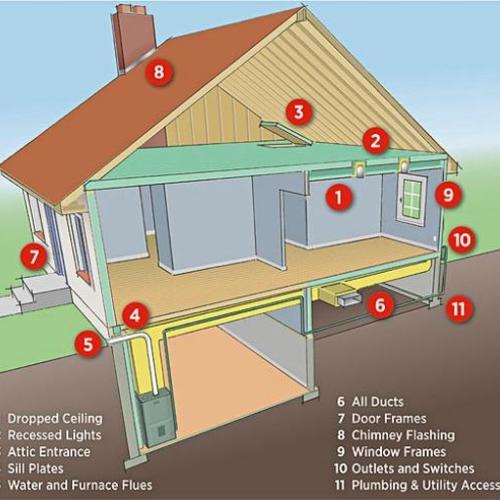
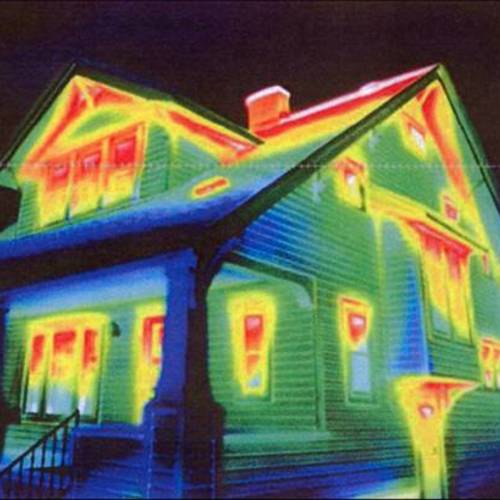






4 Comments
drive by
Thanks Alex- I look at roofs all the time after storms. My house consistently holds snow long after the neighbors is gone. Now I need to do some gas use comparisons to convince others to upgrade as I have. Perhaps a sign in the front yard!
Keep the snow up there
The snow coming off of metal roofs can be quite dangerous to people, plants, and cars that may be underneath it when it's coming off. There's products called Snow Guards that help keep the snow on the metal roofs and let it melt up there. Not only do they help keep people safe, but keeping the snow up there helps with R-Value. My brother in law installed some last year and his heat bill is down $35 in December and December was our coldest December ever on record.
Codes require massive wood valley timbers, but no insulation
I see valleys with huge ice problems from meltng snow along a valley.
Codes require lots of wood to support a valley, much more than days of old. But, no insulation.
Have codes caused an unintended consequence? Seems so.
Are any builders that deal with screwed up building assemblies part of the code writing body?
Ridge vents do what when the snow is 18" deep over them?
Why is something mandated that does not work?
Do codes need to be written more precisely for the exact climate that is being regulated?
Comments?
Log in or create an account to post a comment.
Sign up Log in